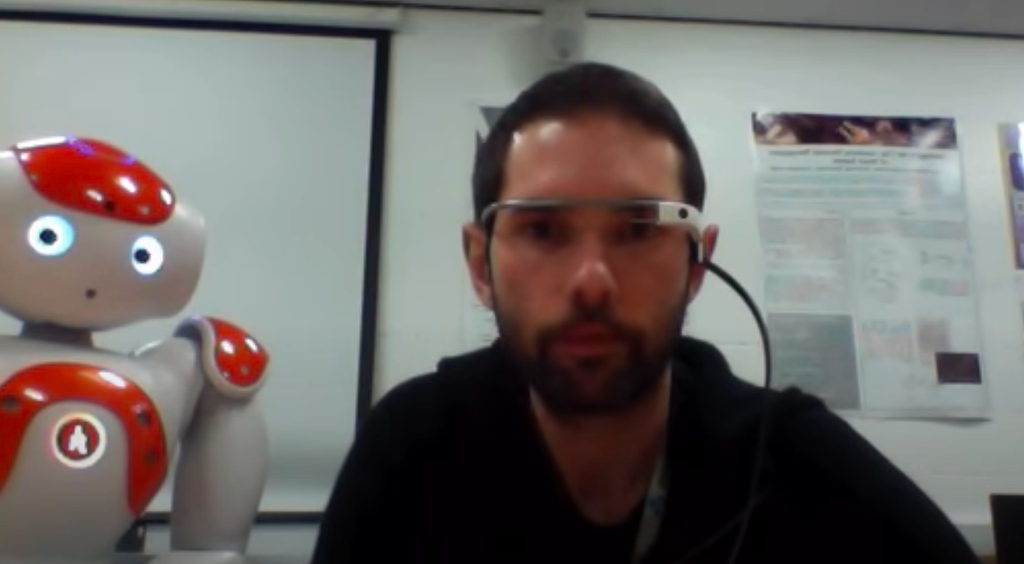Conference Paper | Evaluating a mobile spontaneous eye blink tracker for use in tele-presence HRI as a low bandwidth social communicative cue
- 2016 | Chris Bevan and Danaë Stanton Fraser
- 25th IEEE International Symposium on Robot and Human Interactive Communication (RO-MAN '16).

Abstract | Research suggests that the rate at which humans spontaneously blink their eyes over time is strongly related to their underlying cognitive state. The ability to present the real time blinking behaviour of a human teleoperator via a robot proxy therefore potentially offers observers a low bandwidth - yet salient - cue as to the cognitive state of the teleoperator. In a controlled study, we demonstrate and evaluate a wireless eye blink detector embedded in a Google Glass wearable computer, transmitting captured blink events in real time for display on a NAO robot. From our evaluation, we present accuracy rates from 28 participants under a range of environmental conditions, describing issues and phenomena encountered. From a total of 3722 blink events, our prototype blink capture system achieved an overall accuracy of 80.5% across three activity conditions of rest, reading and interview. Additionally, we observed that people blink approximately 33% more frequently when they are listening compared to when they are speaking. Results are discussed in terms of the requirements of a spontaneous blink detector suitable for capturing real time blinking behaviours within real world conditions.
- Associated Project
- Being There: Humans and Robots in Public Spaces
- DOI
- https://doi.org/10.1109/ROMAN.2016.7745182